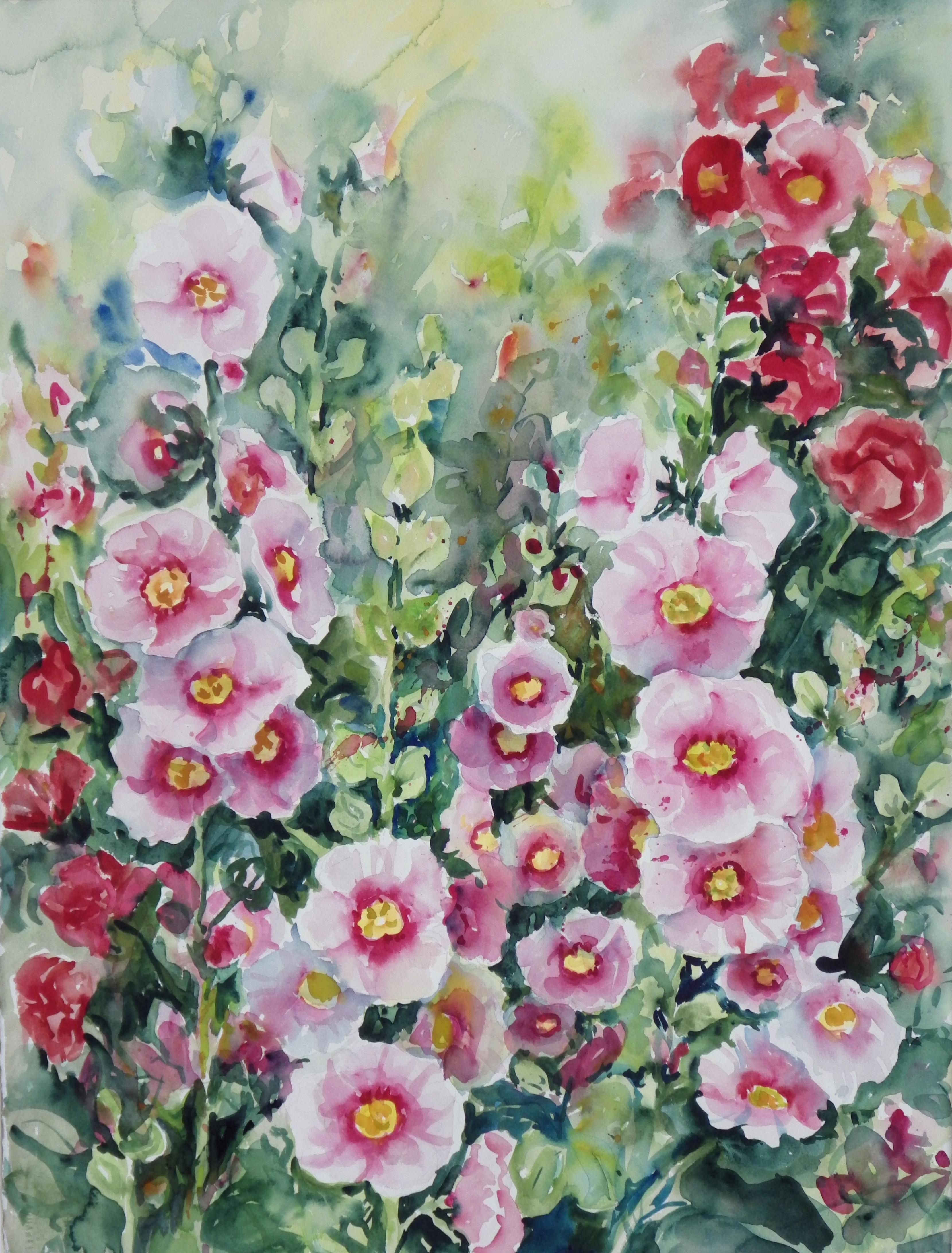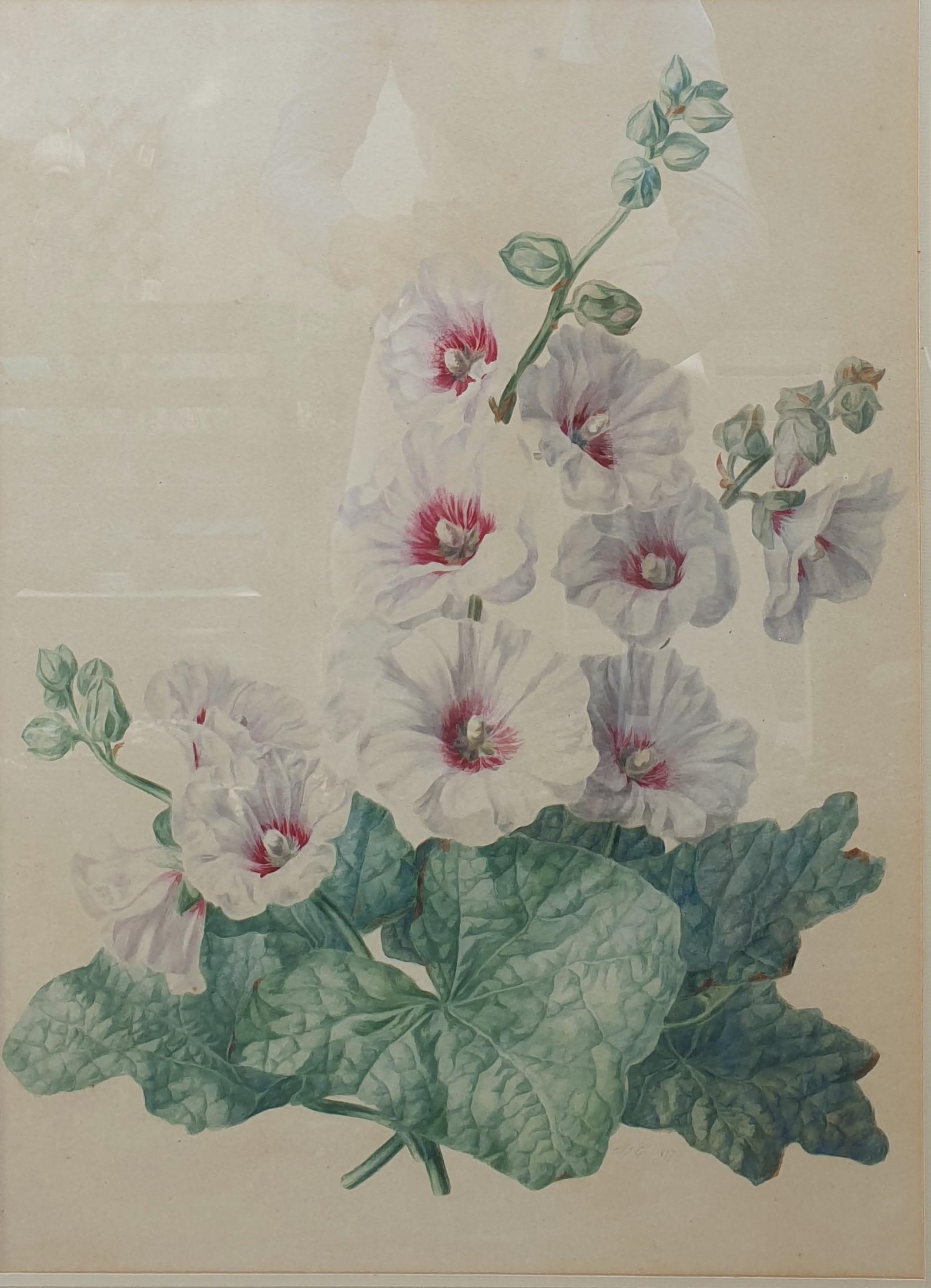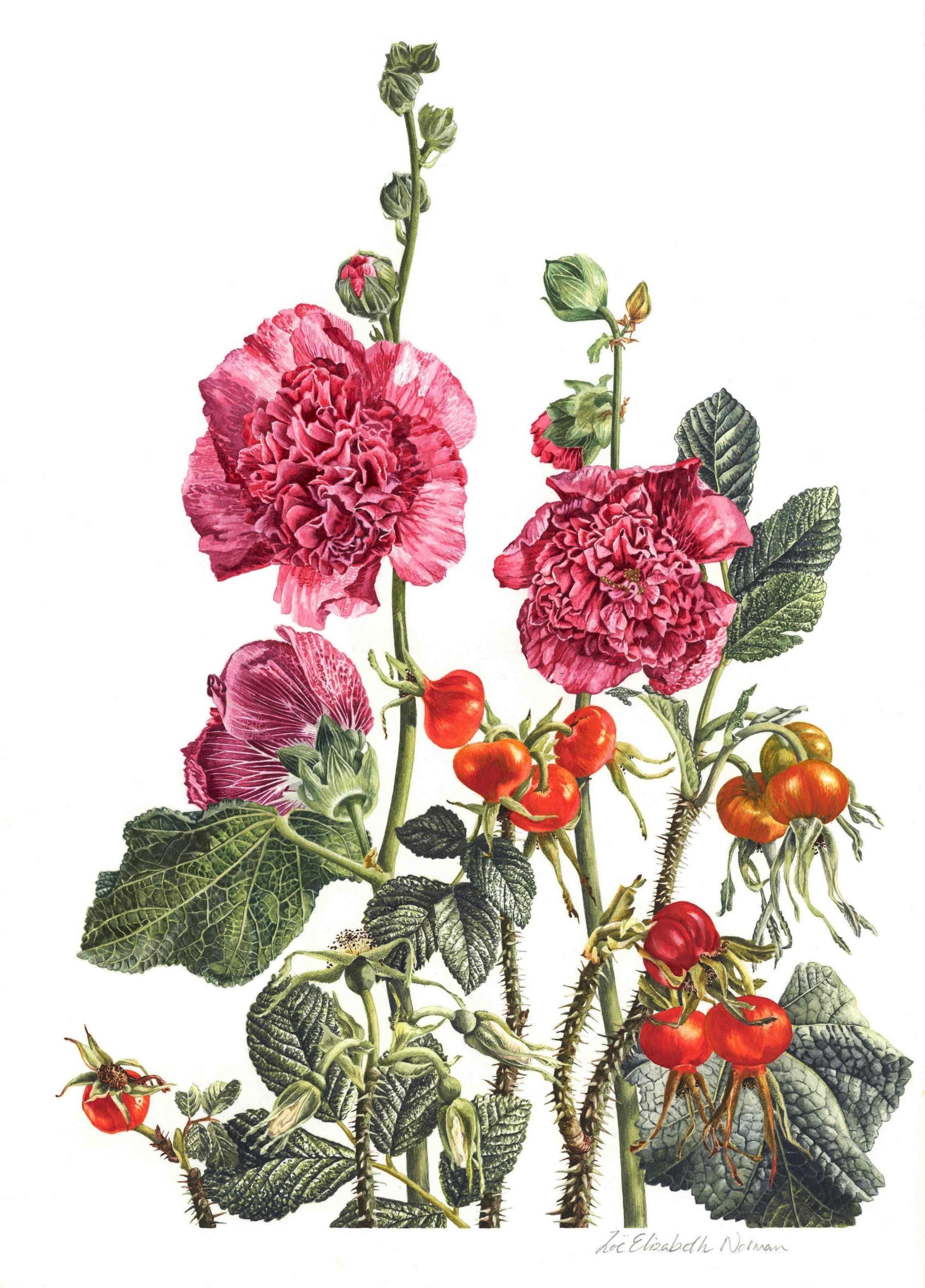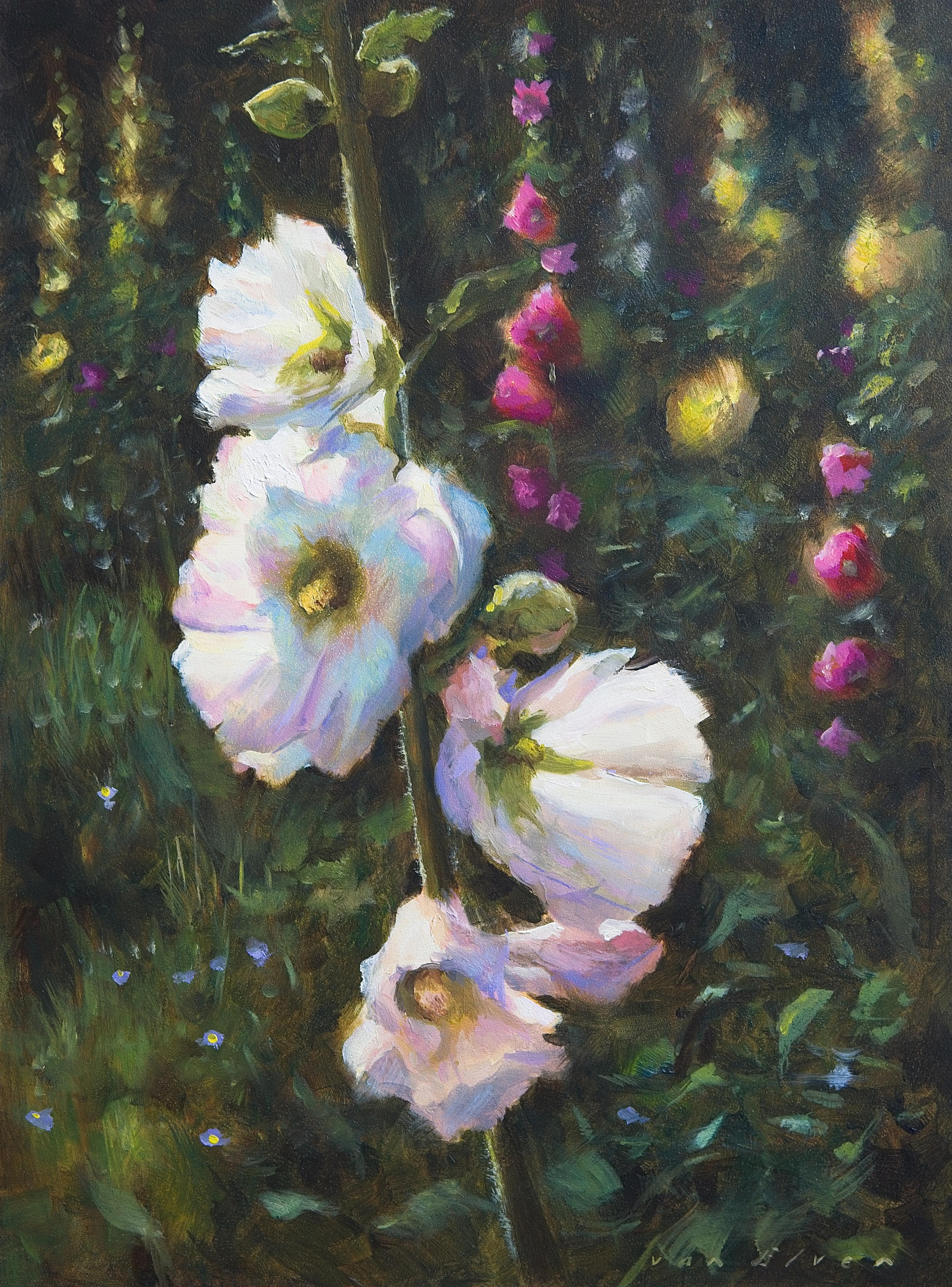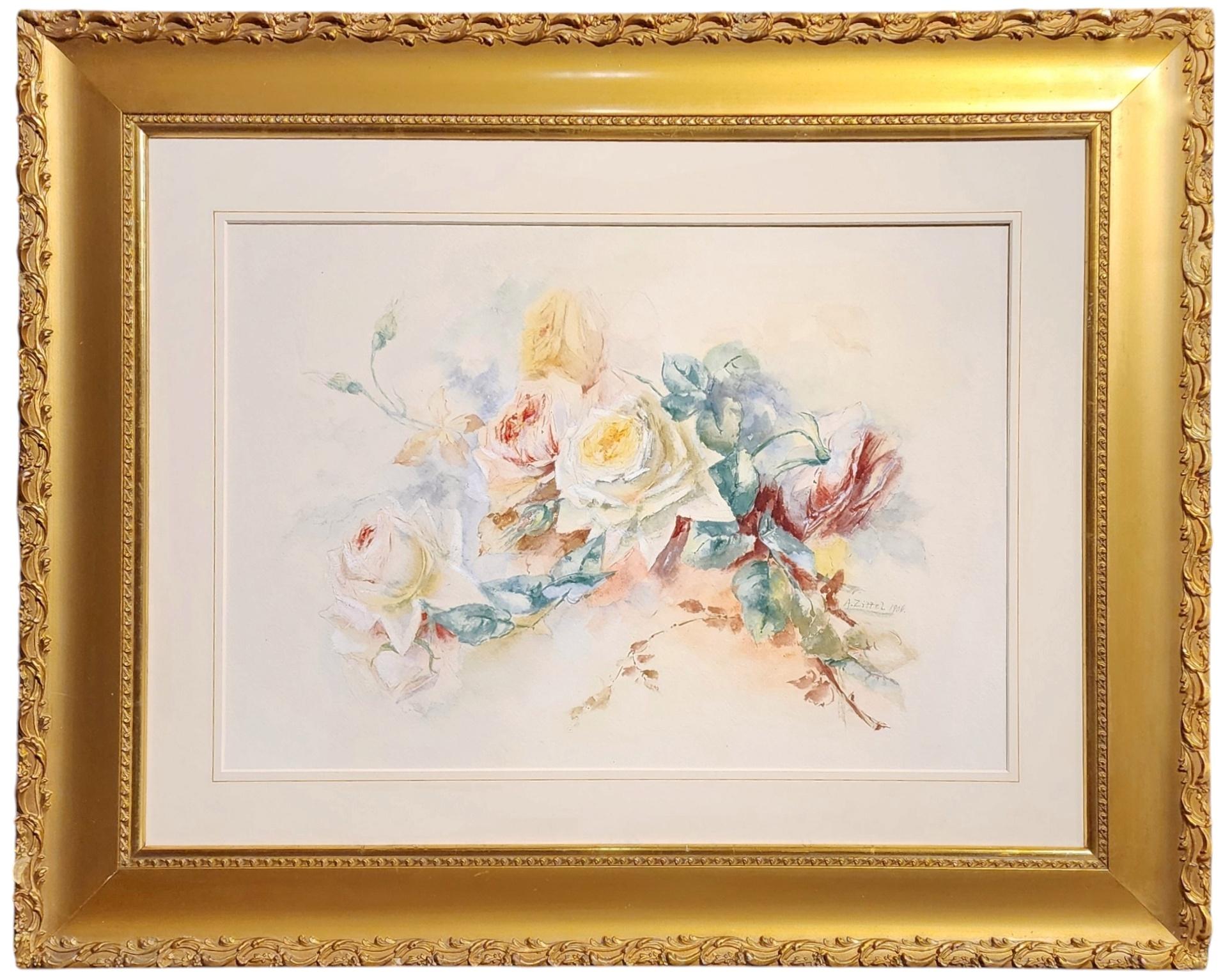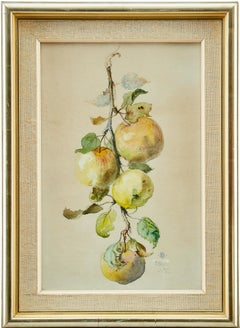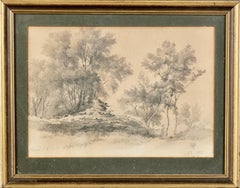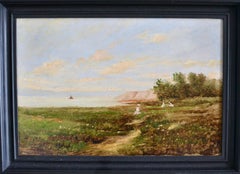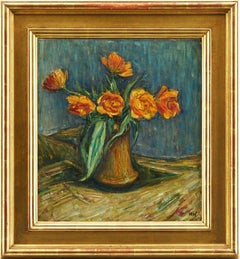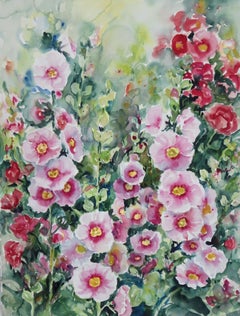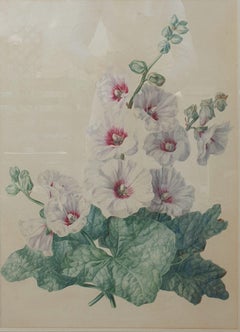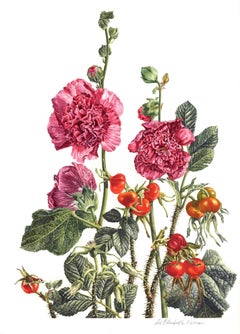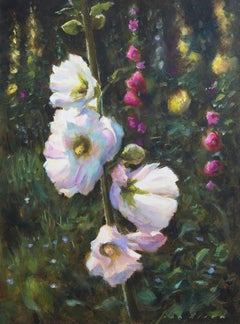Items Similar to Hollyhocks and Roses in a Garden with Butterfly
Want more images or videos?
Request additional images or videos from the seller
1 of 9
UnknownHollyhocks and Roses in a Garden with ButterflyLate 19th century
Late 19th century
$1,556.62
£1,150.68
€1,300
CA$2,117.10
A$2,372.20
CHF 1,234.82
MX$29,020.27
NOK 15,673.79
SEK 14,803.71
DKK 9,898.86
Shipping
Retrieving quote...The 1stDibs Promise:
Authenticity Guarantee,
Money-Back Guarantee,
24-Hour Cancellation
About the Item
This is a beautiful and highly decorative watercolor painting, featuring a charming garden scene filled with pink and white hollyhocks alongside blooming roses. Nestled among the delicate flowers is a butterfly, quietly resting and adding a touch of liveliness to the tranquil composition. In the background, an old arched stone wall, partially covered by trees and lush greenery, provides a sense of depth and timelessness to the setting.
Although the painting is unfortunately unsigned, it demonstrates a high level of artistic skill and attention to detail, suggesting it was created by a talented hand. Possibly of English origin, the work dates to the late 19th century, during a period when such botanical and garden scenes were particularly popular.
The painting has been well preserved over the years and shows no visible damage. It remains in good condition overall. The frame is of a later date, but complements the piece nicely without detracting from the artwork itself.
- Creation Year:Late 19th century
- Dimensions:Height: 31.11 in (79 cm)Width: 26.38 in (67 cm)Depth: 1.19 in (3 cm)
- Medium:
- Movement & Style:
- Period:
- Condition:No visibel damage and in good condition.
- Gallery Location:Stockholm, SE
- Reference Number:1stDibs: LU2608216457842
About the Seller
5.0
Vetted Professional Seller
Every seller passes strict standards for authenticity and reliability
1stDibs seller since 2023
19 sales on 1stDibs
- ShippingRetrieving quote...Shipping from: Stockholm, Sweden
- Return Policy
Authenticity Guarantee
In the unlikely event there’s an issue with an item’s authenticity, contact us within 1 year for a full refund. DetailsMoney-Back Guarantee
If your item is not as described, is damaged in transit, or does not arrive, contact us within 7 days for a full refund. Details24-Hour Cancellation
You have a 24-hour grace period in which to reconsider your purchase, with no questions asked.Vetted Professional Sellers
Our world-class sellers must adhere to strict standards for service and quality, maintaining the integrity of our listings.Price-Match Guarantee
If you find that a seller listed the same item for a lower price elsewhere, we’ll match it.Trusted Global Delivery
Our best-in-class carrier network provides specialized shipping options worldwide, including custom delivery.More From This Seller
View AllTree Branch With Apples, Watercolor, 1895
By Otto Strandman
Located in Stockholm, SE
A Branch with Apples, watercolor and gouache on paper by Swedish artist Otto Strandman (1871–1960). The composition features a delicately rendered branch with green and reddish apple...
Category
1890s Naturalistic Still-life Paintings
Materials
Paper, Watercolor, Gouache
Narni Landscape Drawing
Located in Stockholm, SE
“Hilly landscape with trees and bushes from Narni in Italy,” sketched by Gustav Wilhelm Palm (1810–1890). Dated and signed “Narni 16 Sept” with “G.W [palm tree] 45,” it portrays gent...
Category
1840s Other Art Style Landscape Drawings and Watercolors
Materials
Paper, Pencil
Landscape with Women Picking Flowers, Possibly on Island of Mön
Located in Stockholm, SE
A fine small plein air study of three women picking flowers on the meadow next to white cliffs and sea. In the horizon where the sky ends, the contours of mainland is visible as a sh...
Category
Late 19th Century Naturalistic Landscape Paintings
Materials
Paper, Oil, Cardboard
On Hold
$624
Free Shipping
Karl Nordström, Yellow Tulips, Signed and dated.
Located in Stockholm, SE
A beautiful still-life of yellow and red tulips in a vase by Karl Nordström (1855-1923), signed 'KN' and dated a tergo 1917. The vibrant flowers are standing in a vase which is placed on a cloth against a bluish-green background.
Karl Fredrik Nordström was born on the Swedish west coast on the large island of Tjörn and was a Swedish painter known mostly for his landscape paintings.
He came to Stockholm in 1875 and started to study at the
Royal Art Academy, where he was tutored by Edvard Perséus, among others. There, he also became close friends with the artists Richard Bergh and Nils Kreuger...
Category
1910s Expressionist Still-life Paintings
Materials
Canvas, Oil
A Serene Dawn by the Lake with Villagers
Located in Stockholm, SE
A Tranquil Dawn by the Lake
A serene, wind‑still dawn scene in watercolor: a woman and a man in a small boat moored to a jetty, both with their backs to the viewer as they tend to th...
Category
1840s Other Art Style Landscape Drawings and Watercolors
Materials
Paper, Watercolor
Eurasian Woodcock Wading
Located in Stockholm, SE
Eurasian woodcock wading in a Stream by Thure Wallner, Signed Th. Wallner, oil on panel.
This charming small painting by Thure Wallner depicts an Eurasian woodcock wading in the flowing waters of a stream or brook. The bird is depicted navigating the shallow current in front of a large moss-covered stone, adding a sense of natural depth and tranquility to the composition. The soft, earthy tones and the movement of the water contribute to the atmospheric quality of the scene.
Thure Vilhelm Wallner (1888–1965) was a Swedish painter and illustrator known for his meticulous depictions of Nordic wildlife and landscapes. He developed an early passion for drawing and painting, receiving private lessons from Artur Bianchini. Around 1910, he furthered his studies at Althins school of painting in Stockholm.
Wallner suffered from poor health throughout his life, which led to isolation from other children. To occupy himself, he copied nature and animal studies from magazines, which later influenced his artistic direction. His first known work, a still life, was created in 1903. Over the years, he refined his technique, taking early inspiration from Bruno Liljefors, though his own style became highly detailed and realistic, with a deep focus on nature and wildlife.
He primarily painted Swedish fauna and landscapes, particularly from Sörmland and the Swedish mountain...
Category
Mid-20th Century Naturalistic Animal Paintings
Materials
Oil, Panel
You May Also Like
Hollyhocks, Original Watercolor Painting, 2014
Located in Boston, MA
Artist Commentary:
This is an original watercolor floral garden painting, 22 x 30 0nches.
Keywords: flowers, hollyhocks, pink, nature, green, p...
Category
21st Century and Contemporary Impressionist Landscape Paintings
Materials
Paper, Watercolor
Watercolor 19th French school flowers hollyhocks large Academic
Located in PARIS, FR
French school of the mid-19th century
Watercolor
51 x 37 cm (69 x 55 cm with frame)
Signed and dated at the bottom “M. C. / 1857”
The hollyhock comes from China, passing through Sy...
Category
1850s Still-life Drawings and Watercolors
Materials
Watercolor
Hollyhocks & Rosa Rugosa, Painting, Watercolor on Paper
By Zoe Elizabeth Norman
Located in Yardley, PA
Beautiful original botanical watercolour of a double plum coloured hollyhock and Rosa Rugosa hips. This watercolour was painted from live...
Category
2010s Realist Drawings and Watercolor Paintings
Materials
Watercolor
Hollyhocks- 21st Century Contemporary Painting of a Landscape with Flowers
By Erik van Elven
Located in Nuenen, Noord Brabant
This painting is by Dutch Impressionist painter Erik van Elven.
This young artist likes to paint in the style of the Dutch Masters, but also has developed his own and unique style. ...
Category
2010s Contemporary Figurative Paintings
Materials
Oil, Panel
Antique American Floral Still Life of Roses, Delicately Rendered
Located in Grand Rapids, MI
Antique Floral Still Life of Roses, Delicatly Rendered
American, 19th/20th Century
Signed: A. Ziffel 1906 (Lower, Right)
" Still Life of Roses ", 1906
Watercolor and Gouache on...
Category
Early 20th Century Still-life Drawings and Watercolors
Materials
Paper, Watercolor, Gouache, Graphite
Bouquet of hollyhocks
By Eugène Petit
Located in Paris, IDF
Louis Marie Eugène Arthur PETIT
(Paris, 1838 – Paris, 1886)
Bouquet of Hollyhocks
Oil on canvas
Signed lower right
110 x 55 cm
Eugène Petit was born in Paris in the ninth arrondis...
Category
Late 19th Century French School Still-life Paintings
Materials
Oil
More Ways To Browse
Antique Butterfly
Butterfly Drawing
Antique Rose Drawing
Flowers And Butterflies Paintings
Flowers And Butterfly Painting
19th Century Botanical Watercolor
Antique Framed Butterflies
Still Lifes Butterflies
Oil Paintings New York City
Original Midcentury Art
Used Plexiglass
De Young
New York Lithographs
Paintings By A Silver
Paper Collage Art
Antonio Antonio
Paris Original Lithograph
European Vintage Art Prints
